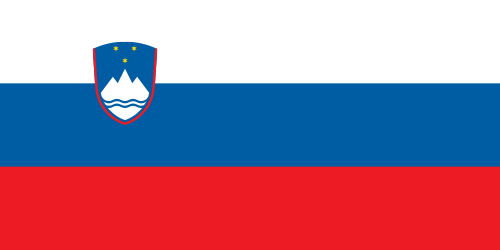Slovenia, a hidden gem in Central Europe, is known for its stunning natural beauty, from the majestic Julian Alps to the tranquil shores of Lake Bled. This small, yet diverse country offers a rich tapestry of experiences, blending medieval architecture with vibrant cultural scenes in cities like Ljubljana. With its lush forests, picturesque vineyards, and a commitment to sustainability, Slovenia is an enchanting destination for nature lovers and culture enthusiasts alike.
List of National and Public Holidays in Slovenia for the year 2024
- New Year’s Day: Monday, 1 January 2024
- New Year Holiday: Tuesday, 2 January 2024
- Prešeren Day: Thursday, 8 February 2024
- Easter Sunday: Sunday, 31 March 2024
- Easter Monday: Monday, 1 April 2024
- Resistance Day: Saturday, 27 April 2024
- May Day: Wednesday, 1 May 2024
- May Day Holiday: Thursday, 2 May 2024
- Whit Sunday: Sunday, 19 May 2024
- National Day: Tuesday, 25 June 2024
- Assumption Day: Thursday, 15 August 2024
- Reformation Day: Thursday, 31 October 2024
- All Saints’ Day: Friday, 1 November 2024
- Christmas Day: Wednesday, 25 December 2024
- Independence and Unity Day: Thursday, 26 December 2024

Ten interesting Facts about Slovenia
- Location: Slovenia is located in Central Europe and is bordered by Italy to the west, Austria to the north, Hungary to the northeast, Croatia to the south and southeast, and the Adriatic Sea to the southwest.
- Area: Slovenia covers an area of about 20,273 square kilometers, making it a relatively small country in terms of land area.
- Capital and Major Cities: The capital of Slovenia is Ljubljana. Other major cities include Maribor, Kranj, and Celje.
- Language: The official language of Slovenia is Slovene, which is spoken by the majority of the population.
- Currency: The currency used in Slovenia is the Euro (EUR).
- Economy: Slovenia has a high-income advanced economy with a very high Human Development Index. It is also a member of the European Union, the Eurozone, the Schengen Area, and the Organization for Economic Co-operation and Development (OECD).
- Government: Slovenia is a parliamentary republic with a multi-party system. The President is the head of state, while the Prime Minister is the head of government.
- Natural Features: Slovenia is known for its mountains, ski resorts, and lakes, including Lake Bled, which is a major tourist attraction. Over half of the country is covered by forests, making it one of the greenest countries in the world.
- Cultural Heritage: Slovenia has a rich cultural heritage, with influences from its Slavic, Germanic, Roman, and Hungarian neighbors. It is known for its traditional folk music, dances, and cuisine.
Population:
As of 2024, the population of Slovenia is estimated to be around 2,119,424, according to projections based on the latest United Nations data. The country has been experiencing a slow aging trend and a decline in population growth rate. With a current growth rate of approximately 0.06%, Slovenia’s population is only slightly increasing.
The country has a land area of about 20,273 square kilometers, making it one of the smaller European nations in terms of size. The capital city is Ljubljana, which is also the largest city in Slovenia. Other major cities include Maribor, Celje, and Kranj. The official language is Slovene, and the majority of the population are Slovenes, with other ethnic groups including Serbs, Croats, Bosniaks, and a few others. Slovenian society is characterized by a high level of homogeneity in terms of language, with Slovene being the predominant mother tongue.
Slovenia has a relatively low population density, with about 105.21 people per square kilometer. The country’s population structure indicates a contracting type, common in highly developed countries with low birth and death rates. This is reflected in the age distribution, with a significant portion of the population being in the older age groups.
Economically, Slovenia has a high-income advanced economy and is a member of the European Union and the Eurozone, with the Euro being its official currency. The country is known for its beautiful landscapes, including mountains, forests, and lakes, contributing to its tourism industry.
Life expectancy in Slovenia is relatively high, with total life expectancy at birth being around 77.3 years. This is above the global average, indicating good health care and living conditions in the country.
